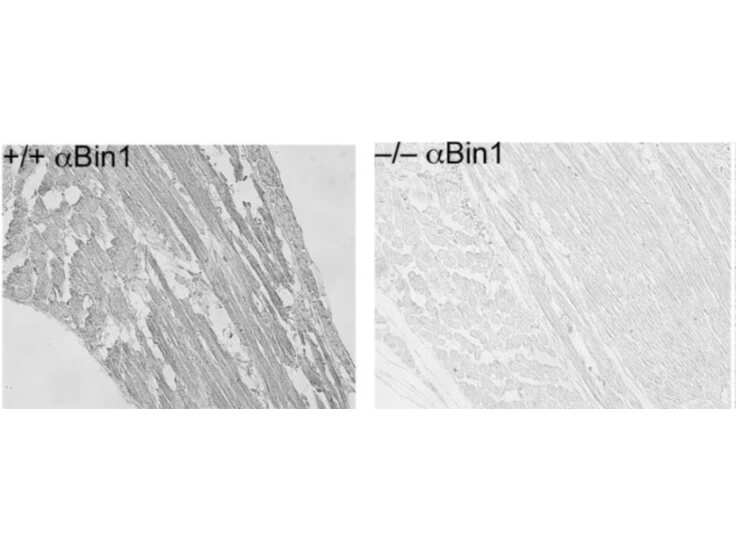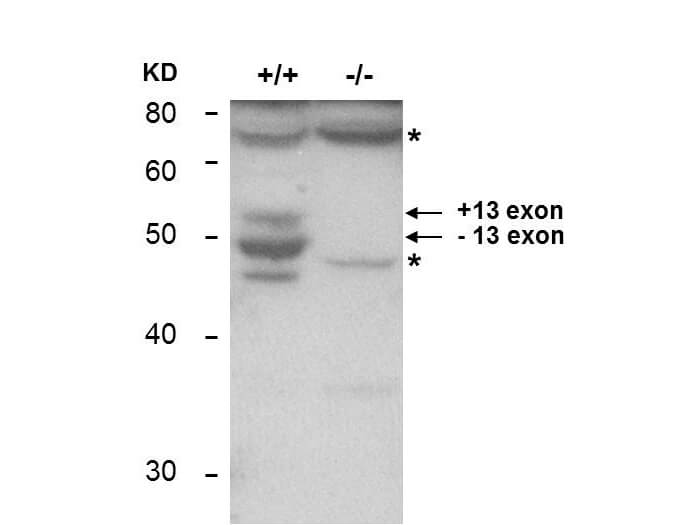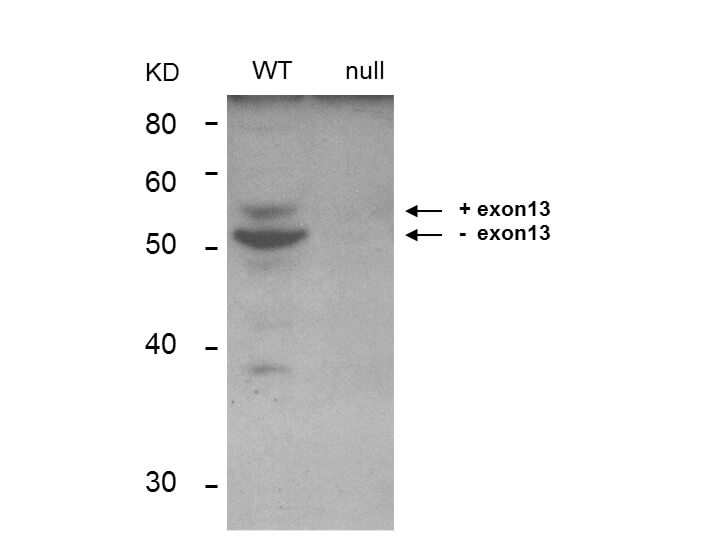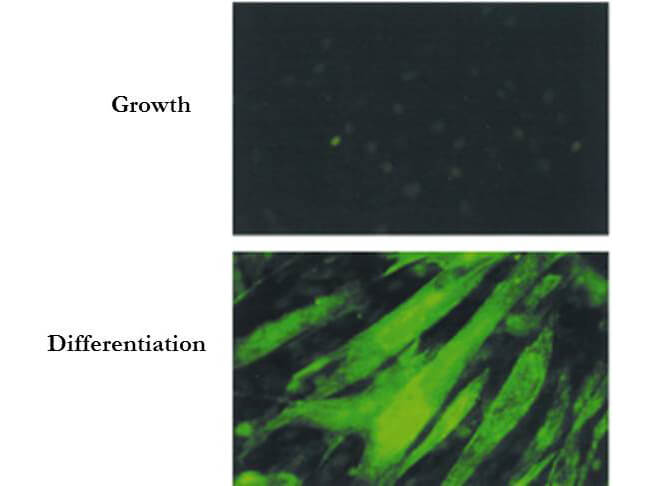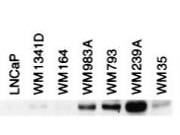Datasheet is currently unavailable. Try again or CONTACT US
BIN1 Antibody
Mouse Monoclonal 2F11 IgG1
1 References
200-301-E63S
200-301-E63
25 µL
100 µg
Liquid (sterile filtered)
Liquid (sterile filtered)
WB, ELISA, IHC
Mouse
Mouse
Shipping info:
$50.00 to US & $70.00 to Canada for most products. Final costs are calculated at checkout.
Product Details
Anti-BIN1 (MOUSE) Monoclonal Antibody - 200-301-E63
mouse anti-BIN1 Antibody, AMPHL, Myc box-dependent-interacting protein 1, Amphiphysin II, Amphiphysin-like protein, Box-dependent myc-interacting protein 1, Bridging integrator 1, BIN 1, BIN-1, BIN1 antibody, anti-BIN1 antibody
Mouse
Monoclonal
IgG1
Target Details
BIN1 - View All BIN1 Products
Mouse
Recombinant Protein
Anti-BIN1 (MOUSE) Monoclonal Antibody was produced in mouse by repeated immunizations with chimeric protein that encoded the human BIN1 BAR domain followed by hybridoma development.
Anti-BIN1 was purified from clarified mouse ascetic fluid by Protein A chromatography followed by extensive dialysis against the buffer stated above. BIN1 antibody is specific for human BIN1 protein. A BLAST analysis was used to suggest cross-reactivity with BIN1 from human and mouse sources based on 100% homology with the immunizing sequence. Cross-reactivity with BIN1 from other sources has not been determined.
O00499 - UniProtKB
NP_004296.1 - NCBI Protein
Application Details
ELISA, IHC, WB
Anti-BIN1 antibody has been tested for use in Western Blot, ELISA, IP, and IHC. This antibody is suitable for. Specific conditions for reactivity should be optimized by the end user.
Formulation
1.0 mg/mL by UV absorbance at 280 nm
0.02 M Potassium Phosphate, 0.15 M Sodium Chloride, pH 7.2
0.01% (w/v) Sodium Azide
None
Shipping & Handling
Dry Ice
Store vial at -20° C prior to opening. Aliquot contents and freeze at -20° C or below for extended storage. Avoid cycles of freezing and thawing. Centrifuge product if not completely clear after standing at room temperature. This product is stable for several weeks at 4° C as an undiluted liquid. Dilute only prior to immediate use.
Expiration date is one (1) year from date of receipt.
Bin1 is a conserved member of the BAR family of genes that have been implicated in diverse cellular processes including endocytosis, actin organization, programmed cell death, stress responses, and transcriptional control. The first mammalian BAR protein to be discovered, Amphiphysin I (AmphI), was identified in an immunoscreen for proteins associated with the plasma membranes of synaptic neurons, functions in the control of clathrin-dependent synaptic vesicle endocytosis. The mammalian Bin1 gene was first identified in a two hybrid screen for polypeptides that bind to the N-terminal Myc box 1 (MB1) portion of the c-Myc oncoprotein. Bin1 is similar to AmphI in overall structure, with an N-terminal BAR domain and a C-terminal SH3 domain. However, the Bin1 gene is more complex than the AmphI gene, encoding at least seven different splice variants that differ widely in subcellular localization, tissue distribution, and ascribed functions. Alternate splicing of the Bin1 gene results in ten transcript variants encoding different isoform. Bin1 is expressed ubiquitously in mammalian cells. Certain splice variants of Bin1 are expressed in the neurons, muscle cells or tumor cells. ) Bin1 may act with cancer suppressor and inhibits malignant cell transformation. Studies in mouse suggest that this gene plays an important role in cardiac muscle development. Bin1 has also been implicated in Alzheimer disease and cardiac disease. Defects in BIN1 are the cause of centronuclear myopathy autosomal recessive; also known as autosomal recessive myotubular myopathy.
An S et al. (2019). Adverse transverse-tubule remodeling in a rat model of heart failure is attenuated with low-dose triiodothyronine treatment. Mol Med.
Applications
WB, IB, PCA
This product is for research use only and is not intended for therapeutic or diagnostic applications. Please contact a technical service representative for more information. All products of animal origin manufactured by Rockland Immunochemicals are derived from starting materials of North American origin. Collection was performed in United States Department of Agriculture (USDA) inspected facilities and all materials have been inspected and certified to be free of disease and suitable for exportation. All properties listed are typical characteristics and are not specifications. All suggestions and data are offered in good faith but without guarantee as conditions and methods of use of our products are beyond our control. All claims must be made within 30 days following the date of delivery. The prospective user must determine the suitability of our materials before adopting them on a commercial scale. Suggested uses of our products are not recommendations to use our products in violation of any patent or as a license under any patent of Rockland Immunochemicals, Inc. If you require a commercial license to use this material and do not have one, then return this material, unopened to: Rockland Inc., P.O. BOX 5199, Limerick, Pennsylvania, USA.

